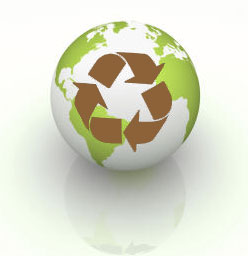 “Shipping and receiving wastes are wastes that are generated while transporting goods from a manufacturer to a user or from one facility location to another.” (Shipping and Receiving Operations) The wastes are packaging materials including cardboard boxes, tape, wrapping materials, pallets, plastic containers and etc…”Corrugated paper products represent the largest percentage of shipping and receiving wastes, with more than 25 billion boxes generated annually. Shipping and receiving wastes comprise nearly one-third of the total U.S. municipal solid waste stream and typically account for much of the waste generated by government agencies and companies.” (Shipping and Receiving Operations)
“Shipping and receiving wastes are wastes that are generated while transporting goods from a manufacturer to a user or from one facility location to another.” (Shipping and Receiving Operations) The wastes are packaging materials including cardboard boxes, tape, wrapping materials, pallets, plastic containers and etc…”Corrugated paper products represent the largest percentage of shipping and receiving wastes, with more than 25 billion boxes generated annually. Shipping and receiving wastes comprise nearly one-third of the total U.S. municipal solid waste stream and typically account for much of the waste generated by government agencies and companies.” (Shipping and Receiving Operations)
For eco-friendly purposes, reducing shipping and receiving wastes will conserve natural resources because many wastes are made of timber-delivered products. Meanwhile, most of these wastes are land filled and packaging materials are usually bulky. Reducing these materials helps extend the lifespan of landfills.
The way of reducing shipping and receiving wastes is to eliminate unnecessary packaging materials including choosing matched packaging materials for products’ size, weight, shape, and property.
Once I ordered a hard drive without case on Neweggs.com, and I received a cardboard box, which is four times the dimension of the hard drive, within hundreds of polylon balls to protect the hard drive inside a plastic container. I was surprised that this package wasted so much on materials and shipping space. Instead of a huge cardboard box within lots of polylon balls, a bubble bag matched the size of the hard drive did the same job and reduced packaging wastes (Shipping and Receiving Operations).
Requesters ask travelers from GoHitchhike to bring wanted items, and travelers give items to requesters face-to-face. Travelers carry items through flights directly, so there are no packaging wastes from shipping companies. Meanwhile, travelers only have limited space for items. In order to save space, travelers usually remove unnecessary packaging materials or even travel without packaging.
(Shipping and Receiving Operations, Pollution Prevention Handbook, no. 24 in a Series of Fact Sheets)
~yuwei fu
